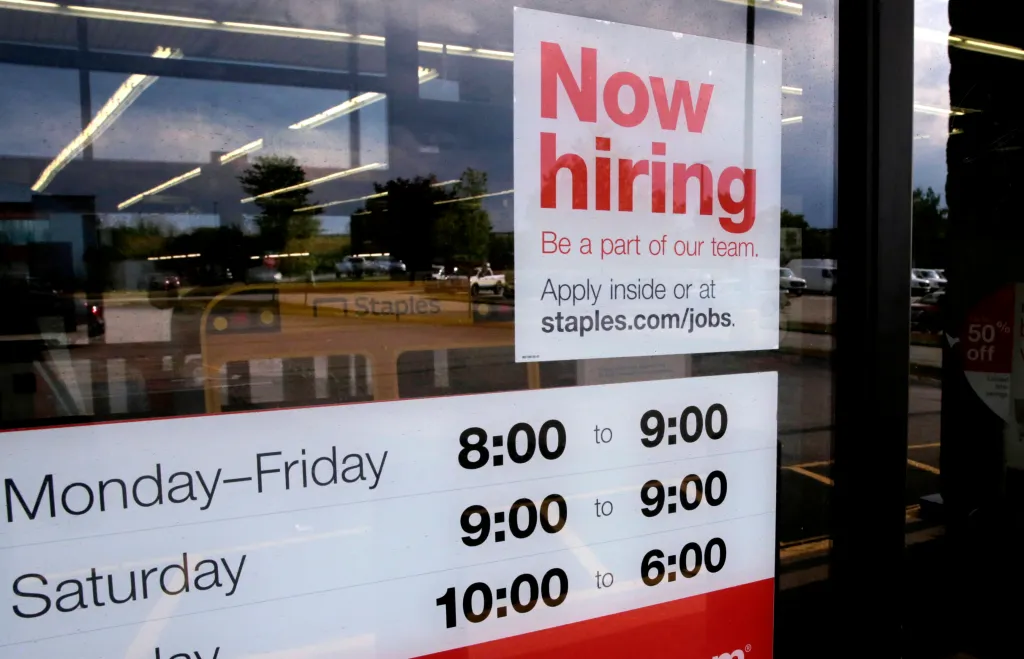
By Jarrell Dillard, Bloomberg News
Payrolls at U.S. companies unexpectedly dropped in September, due at least in part to issues with data analysis.
Private-sector payrolls decreased by 32,000 after a revised 3,000 decline a month earlier, according to ADP Research data released Wednesday. The figure was below all estimates in a Bloomberg survey of economists.
ADP periodically recalibrates their figures based on an expansive series from the Bureau of Labor Statistics that includes state unemployment insurance tax records and covers nearly all U.S. jobs. The adjustment resulted in a reduction of 43,000 jobs in September compared to pre-benchmarked data, the report said.
While that may overstate the weakness in the labor market, ADP said it didn’t alter the recent hiring trend, and job creation continued to lose momentum across most sectors.
“Despite the strong economic growth we saw in the second quarter, this month’s release further validates what we’ve been seeing in the labor market, that U.S. employers have been cautious with hiring,” said Nela Richardson, chief economist at ADP.
The ADP data stand to be the highest profile report on the labor market this week as the government’s September employment numbers, scheduled for Friday, will be delayed given the shutdown. Other recent sources generally point to anemic job growth, less appetite for hiring, few layoffs and modest wage gains.
Economists are typically quick to cast doubt on ADP’s data as it hasn’t always aligned with the government’s count, which is considered to be the gold standard. Moreover, the adjustment methodology was “opaque,” Morgan Stanley economists led by Michael Gapen said in a note.
“We are reluctant to rely on the ADP data,” Gapen’s team said. “The rebenchmarking adds to doubt.”
The company adjusted its data using the BLS’s Quarterly Census of Employment and Wages for 2024 to gauge the nationwide distribution of employment across industries, states and establishment size.
“The most recent release of the QCEW contained a higher-than-normal number of missing or redacted values” for certain industry groups, ADP said in a statement. “This required the benchmark to be calculated at a coarser granularity than in previous years.”
The QCEW data is also used to benchmark the government’s measure of total payrolls annually. A preliminary estimate last month suggested that the adjustment would mark down payrolls in the year through March by a record 911,000.
Treasury yields declined while the S&P 500 was lower.
Low hiring
“This is still a very low hiring environment, and that means monthly job growth will slow and you’re at risk of layoffs,” said Veronica Clark, an economist at Citigroup Inc.
The Federal Reserve lowered interest rates last month given weakness in the job market, and officials are closely watching for any signs of further deterioration. But with several policymakers still wary of lingering inflation, it’s unclear how the central bank will proceed with additional rate cuts — especially if they don’t have the latest government jobs report in hand for their meeting at the end of this month.
Payrolls declined in industries such as leisure and hospitality, business services and financial activities, as well as goods-producing sectors like construction and manufacturing, ADP said. Education and health services was one of the few areas to add headcount.
The Midwest was the only major U.S. region to shed jobs, and declines were concentrated in businesses with less than 500 employees. ADP bases its findings on payrolls covering more than 26 million U.S. private-sector employees.
The ADP report, published in collaboration with the Stanford Digital Economy Lab, showed wage growth continued to gradually soften. Workers who changed jobs saw a 6.6% increase in pay, the lowest in a year. Those who stayed put saw a 4.5% gain, little changed from the prior month.
(With assistance from Julia Fanzeres and Chris Middleton.)
©2025 Bloomberg L.P. Visit bloomberg.com. Distributed by Tribune Content Agency, LLC.



